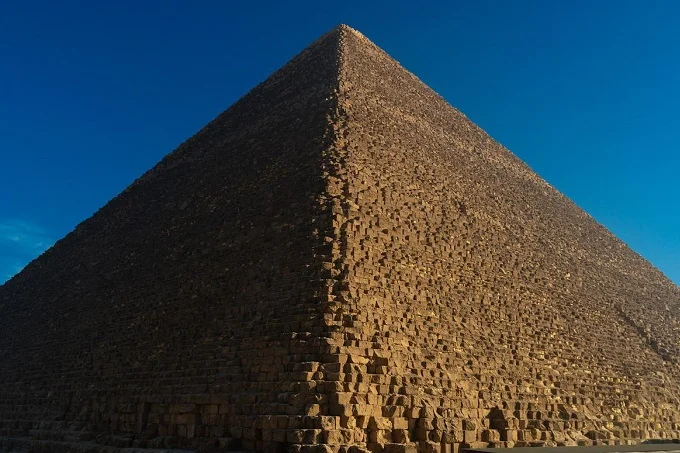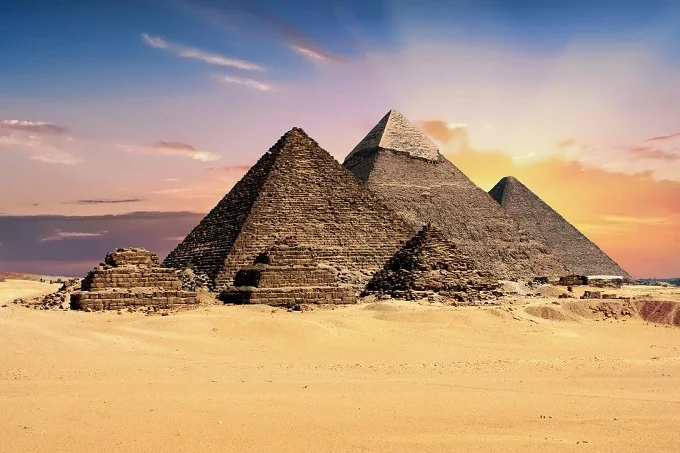The Pyramid of Cheops: who built this wonder of the world and why?

The Pyramid of Cheops is the most famous pyramid in Egypt. However, the Egyptian papyri do not mention its construction at all. The first information about the pyramid of Cheops appears in the works of Greek historian Herodotus. He lived 2,000 years after the creation of the pyramid, but despite this, his “History” is considered the most accurate source of information about the pyramid of Cheops. Egyptologists do not doubt this information, but there is one significant error in this great work.
The Pyramid of Cheops is often considered to be the most well-known pyramid in all of Egypt. However, there is no record of its building at all in any of the Egyptian papyri. The writings of the Greek historian Herodotus are where the earliest knowledge of the pyramid of Cheops may be found. Although he lived 2,000 years after the pyramid was built, his book “History” is regarded as the most reliable source of knowledge on the pyramid of Cheops. Egyptologists have no reason to dispute the accuracy of this material; yet, this outstanding work has one crucial omission.
How long has it been since the pyramid was first constructed?
According to Herodotus, the pyramid was constructed in a span of twenty years. In 1977, Japanese researchers came to the conclusion that they should attempt to recreate this impressive structure. They have made the decision to construct a pyramid that is seven times lower than the Cheops pyramid, and its base is forty-nine times smaller. In the construction of this pyramid, they will only make use of instruments that Egyptologists believe were used by ancient Egyptians. At first, everything worked out just like it was supposed to.

However, it was immediately apparent that the job would take far longer than anticipated. To put it another way, they were unable to complete at least the first part of the building in one month. After that, the Japanese used contemporary tools and were able to finish the task in one year. As a result, the volume of the pyramid was 343 times less than it was at the Cheops pyramid.
The conclusion that may be drawn from this is that, using their “own” methods, they will not be able to survive for exactly 20 years. As it turns out, the primary mysteries surrounding the Great Pyramid are neither the building of the pyramid itself nor the absence of allusions to it in ancient Egyptian papyri.
No hieroglyphs were found
Anyone who has even a passing interest in ancient Egypt is aware that every old edifice is covered with hieroglyphs. However, the Cheops pyramid does not include any of these items. Neither in the lower rooms nor the graves were there any signs of life. Inscriptions have only been found in the top unloading rooms that were uncovered by Howard Weiss. However, they are written in cursive, which is not a form of writing that was used in Egypt during the period of Cheops. In addition to this, the pharaoh is given titles that he never had throughout his reign.
In the time of Howard Weiss, each of these titles was ascribed to Cheops; but, in subsequent times, it was made abundantly evident that another individual was the rightful owner of each of these titles. The conclusion that can be drawn is that Weiss was the one who really wrote the inscriptions.
These are the journals kept by the “foreman”
In 2013, archaeologists discovered a papyrus that had been written on behalf of the individual who oversaw the building of the Great Pyramids. He described the workers’ routines as well as the construction process of the pyramids in his writing. Egyptologists have achieved a major victory: this provides unmistakable evidence that Egyptians were the ones who constructed the pyramid of Cheops.

However, they fail to take into account the smaller pyramids that are situated in close proximity to the three larger pyramids. The degree of technical sophistication of ancient Egypt is fairly reflected in the quality of the building work. It is unclear if the unnamed foreman wrote about them or referenced another building site in his description. On the other hand, it is quite unlikely that this opus is connected in any way to the Cheops pyramid.
Issues with dating
Concerns are also raised over the antiquity of the Pyramid of Cheops. Egyptologists are of the opinion that it was constructed about 2600 BC. A boat was discovered in the area close to the pyramid. It is thought that Cheops was laid to rest in the chamber. Only the outcomes of the dating experiment are different. It was discovered via the use of radiocarbon dating that the boat had been constructed in the year 3500 B.C., making it one thousand years older than the pyramid.
This information was uncovered. It is important to note that the results of a radiocarbon examination are not completely accurate; the margin of error is estimated to be between 10 and 15 percent. However, in reality, it is ten times greater, anywhere between 100 and 150 percent. That is to say, the typical errors associated with analysis may be present here.
Not only in the pyramid of Cheops can you find mistakes of this kind. It is well known that the framework of the Medium pyramid was fortified with cedar logs put at various points. It can be seen that holes were made in the blocks below the timbers, which were then filled with mortar. This process is obvious. It is estimated that they were created about the third millennium BC.
Despite the fact that it seems to be older than the logs, the pyramid has been dated in the same period that they were. Egyptologists are in complete agreement that the pyramid was built in the third millennium before the common era. Flaws in the date of the boat and the Great Pyramid are not the only ones of their sort, as this excellently demonstrates. This, of course, does not apply to the pyramid of Cheops, but it does illustrate that there are other such inaccuracies.
Naturally, none of these enigmas can be explained by contemporary scientific theory. Egyptologists continue to subscribe to the theory that Pharaoh Cheops spent 20 years and about 4,500 years ago constructing the Great Pyramid’s crowning pyramid, which they believe took him 20 years to complete. At that point in time, the Egyptians did not have a custom of painting tombs, and the walls of the pyramid did not include any hieroglyphs that are commonly recognized. The papyrus in the foreman’s possession details all there is to know about the Great Pyramid as well as any other pyramid. There is currently no official account available about the boat.




